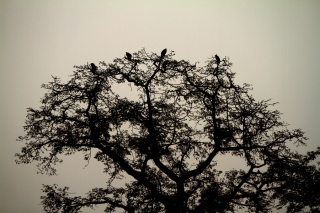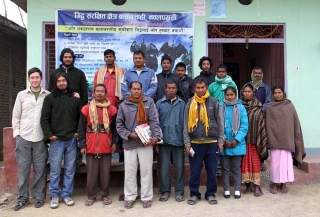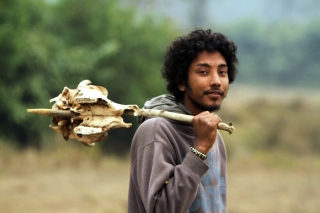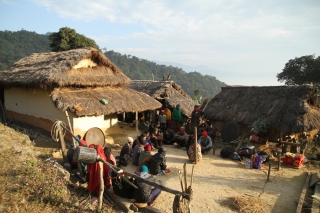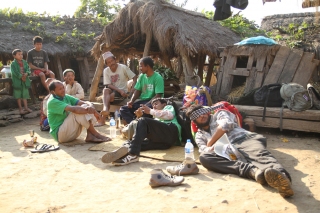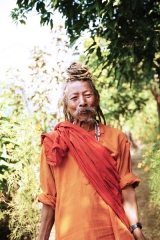A tiny village off the main road: Basa, in Nawalparasi district.
Vultures are dying off faster than any other bird species in Nepal. Diclofenac is a very common anti-inflammatory medication that’s given to cattle. When vultures eat dead cattle and it’s highly poisonous to them. Manoj documented 14 vultures that died from ingesting one dead cow. A few years ago Manoj organized a system: when a cattle dies, it’s checked for diclofenac. If it’s positive, it’s buried, so vultures can’t eat it. This took some significant cultural reprogramming since burying cows was considered sacrilegious. If tested negative, it’s taken to a field off the banks of the river where the vultures feast on the carcass, often as many as 250 on one cow. With the help of the villagers, he’s set up a vulture reserve on the outskirts of jungle surrounding the village.
There’s a ridge in the mountains near Nawalprasi where vultures have nested for ages. We hiked all day to a dramatic cliff where the vultures nest. In a tiny remote village at the top of the mountain, Manoj requested a meeting with the elders. They sat in a circle, smoking cigarettes, with the wives and children on the outside. Manoj held court, explaining vulture conservation, the potential rewards and dangers of bringing tourists to their village. They were enthusiastic about the prospects.
We hiked down the mountain. The view from the ridge was stunning. We visited a giddy dreadlocked orange robed hermit on the way down. He talked about how a few weeks earlier the sky was almost black with vultures, “like soup in the air.”
